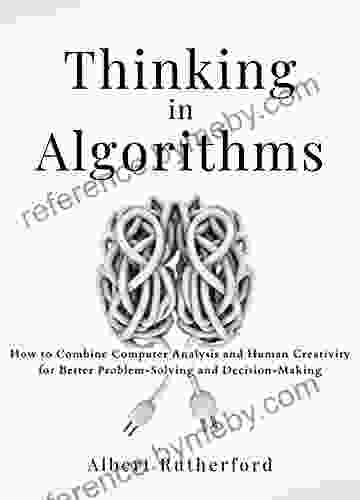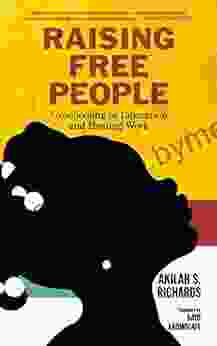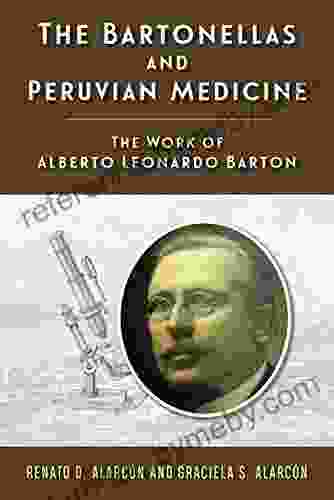Unleashing the Power of Mind and Machine: How to Combine Computer Analysis and Human Creativity for Better Problem Solving

In the ever-evolving landscape of problem-solving, a groundbreaking paradigm shift is emerging, one that seamlessly intertwines the analytical acumen of computers with the boundless creativity of the human mind. This potent fusion unlocks a realm of unprecedented problem-solving capabilities, promising transformative solutions and extraordinary outcomes.
4.2 out of 5
| Language | : | English |
| File size | : | 1278 KB |
| Text-to-Speech | : | Enabled |
| Screen Reader | : | Supported |
| Enhanced typesetting | : | Enabled |
| Word Wise | : | Enabled |
| Print length | : | 144 pages |
| Lending | : | Enabled |
| X-Ray | : | Enabled |
This article will delve into the captivating world of combining computer analysis and human creativity, illuminating the profound impact it can have on problem-solving endeavors. We will explore the multifaceted benefits of this synergistic approach, unveil practical techniques for harnessing its power, and showcase compelling examples of its transformative potential.
The Symbiotic Alliance of Computer Analysis and Human Creativity
Computers, with their lightning-fast computational abilities and vast data-processing capabilities, excel at analyzing vast amounts of information, identifying patterns, and generating insights. Human creativity, on the other hand, is a boundless source of imagination, intuition, and out-of-the-box thinking.
When these two forces unite, they create a formidable problem-solving duo. The analytical precision of computers complements the divergent thinking of humans, allowing for a comprehensive and nuanced approach to problem-solving.
Benefits of Combining Computer Analysis and Human Creativity
- Enhanced Problem Definition: By leveraging computer analysis to gather and interpret data, organizations can gain a deeper understanding of the problem's root causes and contributing factors. This clarity enables more targeted and effective problem-solving strategies.
- Broader Solution Exploration: The combination of computer-generated insights and human creativity expands the range of potential solutions. Computers can generate a vast array of options, while human creativity can refine and enhance these options, leading to more innovative and impactful solutions.
- Improved Decision-Making: By utilizing computer analysis to evaluate the potential outcomes of different solutions, organizations can make more informed decisions. This data-driven approach reduces the risk of making costly mistakes and increases the likelihood of successful outcomes.
- Accelerated Innovation: The synergy between computer analysis and human creativity fosters a dynamic environment conducive to innovation. The iterative process of computer-assisted analysis and human-driven refinement accelerates the development of groundbreaking solutions.
Practical Techniques for Combining Computer Analysis and Human Creativity
Harnessing the power of this synergistic approach requires a deliberate and structured methodology. Here are some practical techniques to effectively combine computer analysis and human creativity:
1. Define the Problem Clearly
A well-defined problem is the cornerstone of effective problem-solving. Engage in a thorough analysis of the problem's context, scope, and constraints. This clarity will guide the subsequent steps.
2. Leverage Computer Analysis
Utilize computer analysis to gather and interpret relevant data. This may involve data mining, statistical analysis, or simulations. The insights gained will inform the next stage of the problem-solving process.
3. Foster Human Creativity
Create an environment that encourages divergent thinking and creative exploration. Conduct brainstorming sessions, engage in mind mapping, or employ other techniques to stimulate creativity.
4. Refine and Evaluate
Combine the computer-generated insights with the human-generated ideas. Evaluate the potential solutions, considering their feasibility, impact, and alignment with the problem's requirements.
5. Iterate and Enhance
Problem-solving is an iterative process. Continuously refine the solutions based on feedback and new insights. This iterative approach leads to increasingly robust and effective solutions.
Examples of Combining Computer Analysis and Human Creativity
Numerous organizations have successfully harnessed the power of combining computer analysis and human creativity to achieve remarkable results.
Example 1: Pharmaceutical Research
In the pharmaceutical industry, computer analysis is used to identify potential drug targets and optimize drug design. However, human creativity is essential for generating novel ideas and refining the research direction.
Example 2: Financial Forecasting
Financial institutions utilize computer analysis to predict market trends and assess risk. Human creativity is then applied to interpret the data, develop trading strategies, and make informed investment decisions.
Example 3: Urban Planning
Urban planners leverage computer analysis to model traffic patterns and simulate different development scenarios. Human creativity is then employed to design innovative urban spaces that meet the needs of the community.
The convergence of computer analysis and human creativity is a paradigm shift that is revolutionizing the way we approach problem-solving. By harnessing the analytical prowess of machines and the boundless imagination of humans, we can unlock transformative solutions and achieve unprecedented success.
As we navigate the complexities of the 21st century, the ability to effectively combine computer analysis and human creativity will become increasingly critical. Embracing this synergistic approach will empower us to tackle the most pressing challenges and shape a brighter, more prosperous future.
4.2 out of 5
| Language | : | English |
| File size | : | 1278 KB |
| Text-to-Speech | : | Enabled |
| Screen Reader | : | Supported |
| Enhanced typesetting | : | Enabled |
| Word Wise | : | Enabled |
| Print length | : | 144 pages |
| Lending | : | Enabled |
| X-Ray | : | Enabled |
Do you want to contribute by writing guest posts on this blog?
Please contact us and send us a resume of previous articles that you have written.
 Book
Book Novel
Novel Page
Page Chapter
Chapter Text
Text Story
Story Genre
Genre Reader
Reader Library
Library Paperback
Paperback E-book
E-book Magazine
Magazine Newspaper
Newspaper Paragraph
Paragraph Sentence
Sentence Bookmark
Bookmark Shelf
Shelf Glossary
Glossary Bibliography
Bibliography Foreword
Foreword Preface
Preface Synopsis
Synopsis Annotation
Annotation Footnote
Footnote Manuscript
Manuscript Scroll
Scroll Codex
Codex Tome
Tome Bestseller
Bestseller Classics
Classics Library card
Library card Narrative
Narrative Biography
Biography Autobiography
Autobiography Memoir
Memoir Reference
Reference Encyclopedia
Encyclopedia Alannah Foley
Alannah Foley Ai Yazawa
Ai Yazawa Aesop
Aesop Alex Gough
Alex Gough Albert Jamae
Albert Jamae Adrian Shaughnessy
Adrian Shaughnessy Lucy Atkins
Lucy Atkins Jeff Cooper
Jeff Cooper Karl Wiegers
Karl Wiegers Adil Salahi
Adil Salahi Adele Marie Crouch
Adele Marie Crouch Uri Bar Joseph
Uri Bar Joseph Rachel Marie Martin
Rachel Marie Martin Karl Fulves
Karl Fulves Clara Dehlin
Clara Dehlin Sheryl Peterson
Sheryl Peterson Bob Shepton
Bob Shepton Lorraine O Donnell Williams
Lorraine O Donnell Williams Robert Estella
Robert Estella Adrienne Maree Brown
Adrienne Maree Brown
Light bulbAdvertise smarter! Our strategic ad space ensures maximum exposure. Reserve your spot today!

 Marc FosterThe Essential Guide to Business English Communication: Your Key to Success in...
Marc FosterThe Essential Guide to Business English Communication: Your Key to Success in...
 Federico García LorcaUnveil the Enchantment of "The Christmas Time Travelers: The Professor's...
Federico García LorcaUnveil the Enchantment of "The Christmas Time Travelers: The Professor's...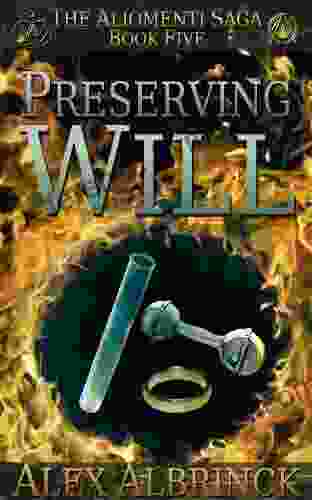
 Italo CalvinoUnveiling the Past in 'Preserving Will: The Aliomenti Saga' - An Epic Tale of...
Italo CalvinoUnveiling the Past in 'Preserving Will: The Aliomenti Saga' - An Epic Tale of... Ibrahim BlairFollow ·15.5k
Ibrahim BlairFollow ·15.5k Ryan FosterFollow ·6.6k
Ryan FosterFollow ·6.6k Eli BlairFollow ·3.6k
Eli BlairFollow ·3.6k Gabriel MistralFollow ·16.2k
Gabriel MistralFollow ·16.2k Braeden HayesFollow ·16.4k
Braeden HayesFollow ·16.4k Jorge AmadoFollow ·6.6k
Jorge AmadoFollow ·6.6k Francis TurnerFollow ·12.1k
Francis TurnerFollow ·12.1k Ron BlairFollow ·8.7k
Ron BlairFollow ·8.7k
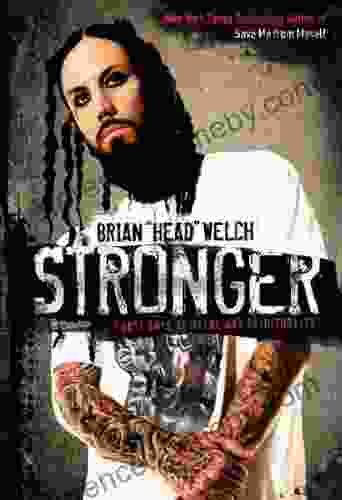
 Brandon Cox
Brandon CoxStronger: Forty Days of Metal and Spirituality
A 40-day...
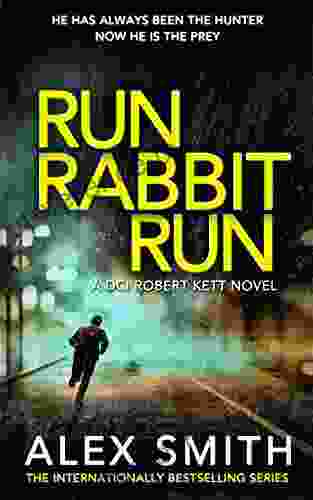
 Dustin Richardson
Dustin RichardsonDelve into the Gripping World of British Crime: DCI Kett...
Unveiling the Intricate Tapestries of Crime...
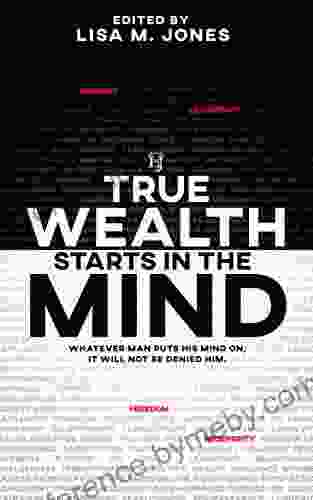
 Giovanni Mitchell
Giovanni MitchellTrue Wealth Starts In The Mind: Unleash Your Inner...
In the pursuit of...
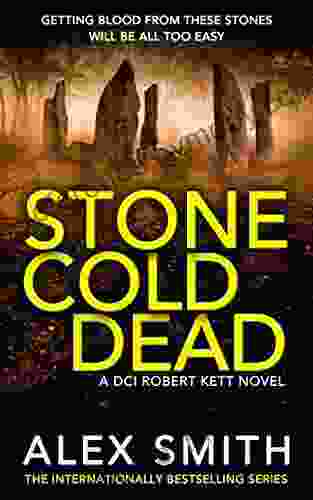
 Duncan Cox
Duncan CoxPulse Pounding British Crime Thriller: DCI Kett Crime...
Prepare for...

 Dashawn Hayes
Dashawn HayesUnveiling the Unwavering Strength and Inspiring Journey...
In the annals of wrestling history, the name...
4.2 out of 5
| Language | : | English |
| File size | : | 1278 KB |
| Text-to-Speech | : | Enabled |
| Screen Reader | : | Supported |
| Enhanced typesetting | : | Enabled |
| Word Wise | : | Enabled |
| Print length | : | 144 pages |
| Lending | : | Enabled |
| X-Ray | : | Enabled |


